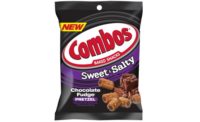
New Technologies Highlighted at SFA’s Pretzel & Baked Snacks Seminar
The 2005 Snack Food Association (SFA) Pretzel & Baked Snacks Seminar provided insight on the technological advances occurring in the baking of snacks. Held at Penn State University in State College, Pa., April 6-7, 2005, the seminar included presentations from numerous university professors, in addition to snack industry representatives on whole grains, nutraceuticals and functional foods, quality assurance, advances in packaging technologies and competitive global food markets.
Microwave heating is among the technologies being investigated for the baked snack industry. Applications can range from finishing/drying to proofing and heating, explained Swamy Anantheswaran, a professor of food science at Penn State. Microwaves use volumetric heating and are not dependent on heat transfer by conduction or convection methods, he said. However, a disadvantage of microwaves is their inability to create uniform energy distribution or heat evenly.
Discussing applications for microwave dryers, Anatheswaran said the dryers provide a rapid method for removing the residual moisture in a finished product. In addition, this technology enhances the value of the product by preserving the aroma and flavor of a product. Microwave proofing can be used with a conventional oven to dramatically decrease the total baking time and reduce the rising time of the dough by half.
The heating of products using microwaves can be up to 50% more efficient than heating by conventional methods, Anantheswaran stressed. He noted that the microwave provides uniformity and precise control over that temperature, while conventional systems are not as precise. Microwave baking equipment has an energy density that enables it to heat foods quickly, dramatically reducing production time, Anantheswaran said.
Understanding Ovens
Baking is more complicated that just heat and time, Terry Groff, president of Reading Bakery Systems, stressed in his presentation on getting the most from your oven. He explained that by gaining a better understanding of the baking process, you can achieve improved results when producing baked snacks. One advance that has helped improve consistency in baked products is a better understanding of heat flux, the rate of heat transfer per square unit or the intensity of a heat source.
The baking process can be divided into three reaction stages or zones, Groff explained. These are the developing zone, the setting zone, and the coloring and drying zone. In the developing zone, the temperature, heat flux and humidity are controlled in the oven. It is during this stage that the dough is proofed as yeast activity accelerates and carbon dioxide is released.
In the setting zone, the food product’s shape is set as the development of the dough is finished. Also in this zone, most of the moisture is removed, the yeast activity dies, the dough expands, and the starch swells.
In the last zone, color development and drying occurs. It is here that the last of the moisture is driven off and the color is developed. By controlling the oven’s temperature and airflow in this zone, one can attain the desired final color, taste and moisture in the finished product.
Foods to Prevent Diseases
Dr. Barry Zoumas, the Alan Warehime professor of Agribusiness at Penn State discussed nutraceuticals anf and functional foods and their role in the snack food industry. Prior to joining Penn State, Dr. Zoumas was vice president for science and technology at Hershey Foods Corporation. Dr. Zoumas was introduced by Michael Warehime, chairman of Snyder’s of Hanover, Inc.
Nutraceuticals and functional foods are about preventing and curing chronic diseases by manipulating the chemical environment of body cells with bioactive compounds, Zoumas explained. The definition of a functional food is, “a food that has a positive health effect over and beyond its nutritional properties.” A nutraceutical is “a food component or bioactive compound that has a health effect over and beyond its nutritional properties.”
Functional foods were first introduced in Japan in 1984. In the U.S., functional foods and nutraceuticals are in regulatory limbo, Zoumas said. One of the specific food ingredients that he discussed was resistant starch, which he said was one of the major developments in our understanding of the importance of carbohydrates for health in the past 20 years. Resistant starch is the sum of starch and starch products not digested in the human small intestine. It can reduce the risk of colon cancer.
In addition gaining a wealth of knowledge in a wide range of educational sessions (more than 12 presentations were offered), seminar attendees were able to meet with leading pretzel industry suppliers who exhibited products and services. Everything from food ingredients, such as flavorings, to manufacturing machinery was on display at the seminar.
By fall of 2006, Penn State will open the doors to its new $45,000,000 Food Science Department, with new laboratories and three pilot plants. It is expected that the center will be a repository of knowledge for the snack food industry and be an invaluable resource in the form of problem-solving, collaborative research, food safety, nutrition and advance process methods. In addition to viewing the resources available to the snack industry at Penn State, pretzel and baked snacks representatives also learned about ingredients, services and technology at the customary table-top exhibits.





